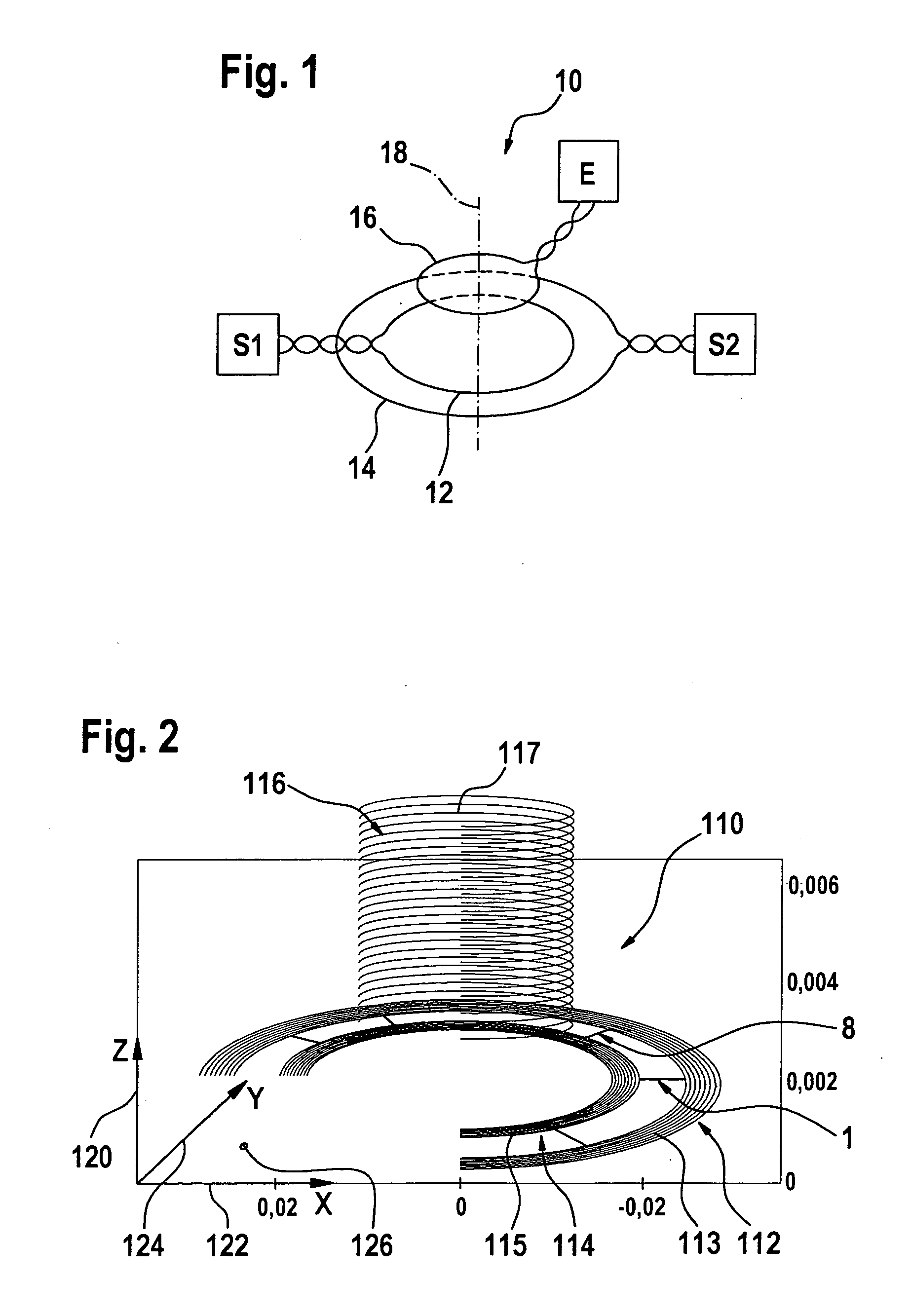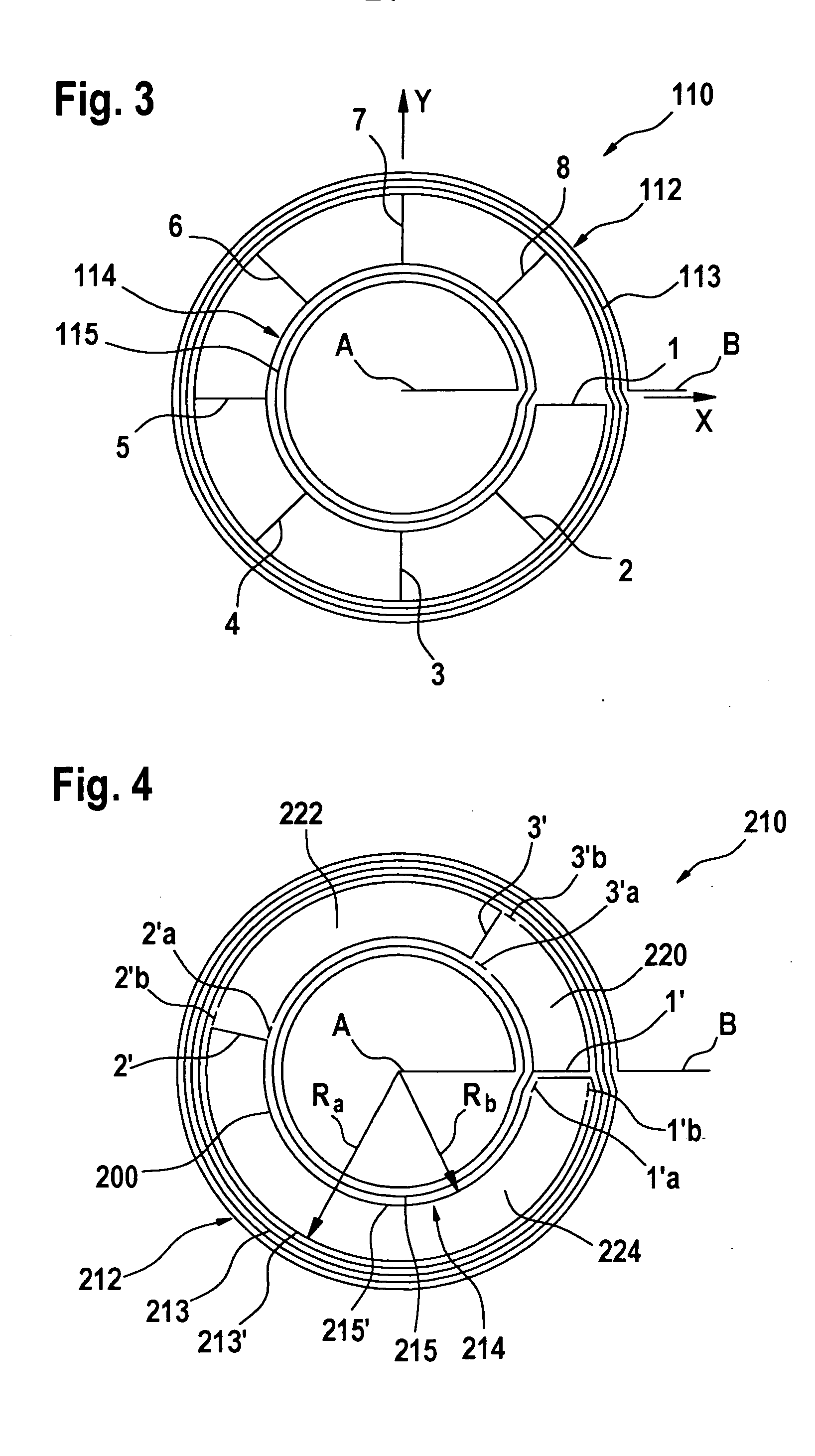Device for Locating Metallic Objects and Methods for Adjusting Such a Device
a technology for locating metallic objects and detectors, applied in the direction of magnetic properties, instruments, material magnetic variables, etc., can solve the problems of narrow tolerances of components used, high cost, and small magnitude of the effect of objects to be located on the coil or the coil of the detector system
- Summary
- Abstract
- Description
- Claims
- Application Information
AI Technical Summary
Benefits of technology
Problems solved by technology
Method used
Image
Examples
Embodiment Construction
[0048]FIG. 1 shows the basic design of an inductive compensation sensor for locating metallic objects, according to the related art. A detector of this type includes three coils in its sensor geometry 10. A first transmit coil 12, which is connected to a first transmitter S1, a second transmit coil 14, which is connected to a second transmitter S2, and a receive coil 16, which is connected to a receiver E. Each coil is depicted as a circular line in this case. The arrangement of these three coils 12, 14, 16 is unique in that they are all located concentrically around a common axis 18. Individual coils 12, 14, 16 have different outer dimensions, so that coil 12 can be inserted in coil 14 coaxially to axis 18.
[0049] The two transmit coils 12 and 14 are supplied by their transmitters S1 and S2 with alternating currents with phase opposition. First transmit coil 12 therefore induces a flux in receive coil 16, which is oriented in the opposite direction from the flux induced by second t...
PUM
 Login to View More
Login to View More Abstract
Description
Claims
Application Information
 Login to View More
Login to View More - R&D
- Intellectual Property
- Life Sciences
- Materials
- Tech Scout
- Unparalleled Data Quality
- Higher Quality Content
- 60% Fewer Hallucinations
Browse by: Latest US Patents, China's latest patents, Technical Efficacy Thesaurus, Application Domain, Technology Topic, Popular Technical Reports.
© 2025 PatSnap. All rights reserved.Legal|Privacy policy|Modern Slavery Act Transparency Statement|Sitemap|About US| Contact US: help@patsnap.com



